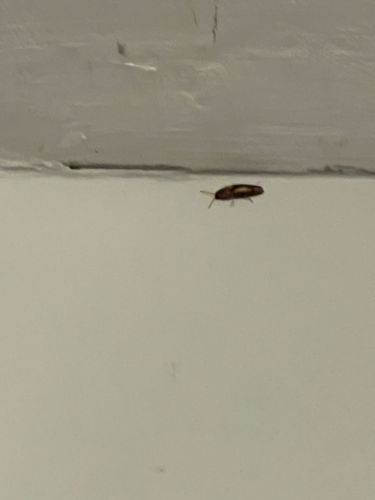German Cockroach
Scientific Name: Blattella germanica
Order & Family: Order: Blattodea, Family: Ectobiidae (formerly Blattellidae)
Size: 1.1 to 1.6 cm (0.43 to 0.63 inches) in length

Natural Habitat
Primarily indoor pests; prefer warm, humid environments, especially kitchens and bathrooms. They can be found in homes, restaurants, hotels, and other food establishments. They often hide in small cracks, behind appliances, and inside walls.
Diet & Feeding
Omnivorous scavengers; they will eat almost anything, including food scraps, grease, soap, glue, and even other cockroaches. They are particularly attracted to starches, sugars, and fatty foods.
Behavior Patterns
Nocturnal; active at night, hiding in cracks and crevices during the day. Known for rapid reproduction rates, especially in favorable conditions. They can run very quickly and often scatter when disturbed.
Risks & Benefits
Risks: German cockroaches are a significant pest. They can spread bacteria and pathogens (like E. coli and Salmonella) on food and surfaces, triggering allergies and asthma in sensitive individuals due to their droppings and shed skin. They are also a nuisance and can contaminate food storage areas. Benefits: None known for humans; in some ecosystems, they may serve as a food source for other animals, but their primary impact is negative in human environments.
Identified on: 8/11/2025